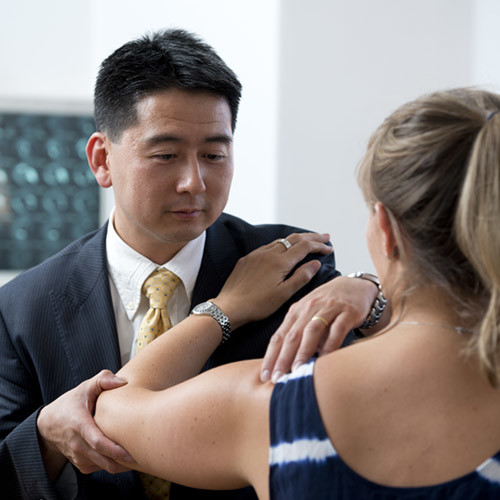Elbow Arthroscopy
Elbow arthroscopy is a minimally invasive surgery performed using a tiny device called arthroscope.
The elbow is the joint that connects the upper arm bone and the forearm bones. Elbow joint helps in movement of the arms forward, backward, as well as to twist the arms inside and outside. Elbow joint may get affected by inflammation, injury, or other disease conditions causing severe pain and requiring surgical treatment.
Conditions of the elbow that can be treated by arthroscopy include fractures, tennis elbow, stiffness, arthritis, and tear in the ligaments, and cartilage.

Elbow arthroscopy is a minimally invasive surgery or keyhole procedure that allows your surgeon to look inside the elbow using small incisions and instruments to evaluate and treat elbow conditions. It is performed under anesthesia. At first, your surgeon makes 2-3 incisions near your elbow one for insertion of an arthroscope, a small device with a camera and lens fixed to the end of a narrow fiber-optic tube and other for insertion of operating instruments. The camera-lens setting magnifies and projects images of the elbow on a large screen monitor. Through the other incisions surgical instruments are inserted to treat the condition. Your surgeon injects a sterile solution into the elbow to expand the joint that allows giving an extra room to work. After the surgery the stitches are closed and dressing is applied.
Some of the advantages of arthroscopy are it requires smaller incisions, minimal soft tissue trauma, less pain, faster recovery time, low infection rate, less scarring, earlier mobilization, and allows patient to restore to normal activities faster.
Some of the risks observed after elbow arthroscopy include infection, damage to the nearby nerves or tissues during surgery, and stiffness which can be treated through occupational therapy. Exercises are performed to strengthen and rebuild elbow strength.
Elbow arthroscopy may not be performed in individuals with ulnar nerve transposition and in those who had surgery earlier that had changed the normal elbow anatomy.
Arthroscopy has distinct advantages for the patient including reduced scarring, less disruption to surrounding soft tissue structures, shorter hospital stay and faster recovery. Some arthroscopic procedures can be done under spinal or regional anaesthesia, therefore eliminating the need for a general anaesthetic.
Book an appointment with our orthopaedic specialists
Book an appointment